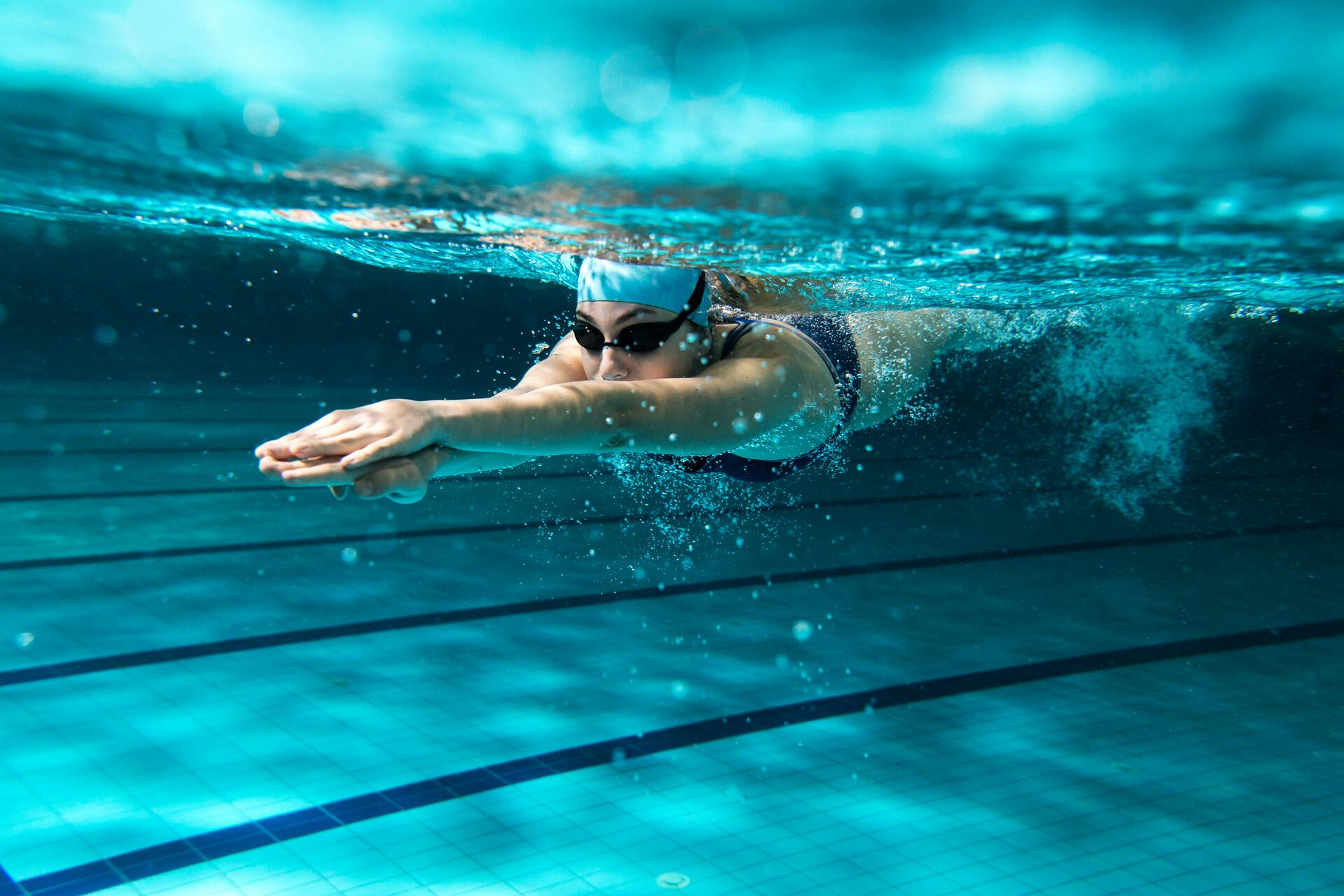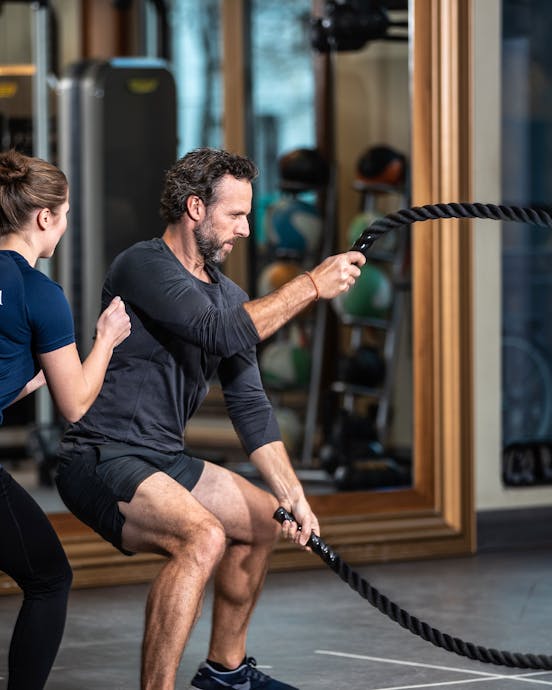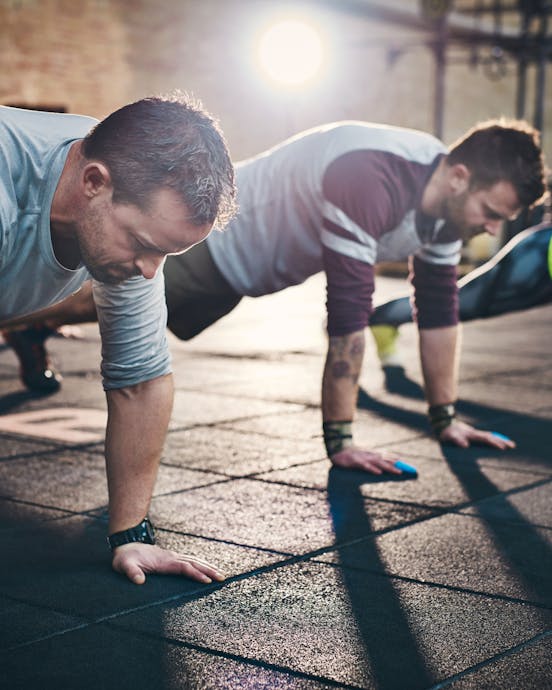The swimming pools in our clubs are the ideal space to relax after a workout, but we tend to forget that they can be used as a complementary training area in their own right. While water-based group classes like AquaGym and AquaBike can help you get back into shape and maintain a level of wellbeing all year round, they are no substitute for a 45-minute swimming session, which offers a complete workout. Eric van Eyseren, swimming instructor at Aspria Royal La Rasante, and Francesca Meini, pool manager and experienced swimmer, share some straightforward advice on how to get the most out of your time in the water.
1. Safe and accessible to all
You can learn to swim and improve your technique at any age, regardless of your body type. In fact, swimming is much gentler than other sports. Unlike jogging, it can be practiced by the vast majority of us, including those with weak muscles.
2. Easy to begin
No need for complicated equipment. For women: a simple, well-cut one-piece and a cap (especially for long hair) and a tight-fitting brief, rather than beach shorts, for men. You should also bring a good pair of goggles.
You don't have to swim very fast to get the benefits of an hour of swimming. The most important thing is to master the different techniques. When done incorrectly, with the head out of the water and the back arched, breaststroke is particularly harmful to the back. These positions favour the curvature of the lower back, the upper back and force the head out of the water with an impact on the cervical spine.
Contrary to what you might think, it is best to start with the back and move into the breaststroke once you are more experienced. If you have back pain, the backstroke is the best choice. To swim the breaststroke, you must put your head in the water, then take it out to breathe with each movement of the arms and legs. The basic stroke is the arrow: hands and legs together. Then spread your arms apart and bring them back to chest level. At the same time, stack the legs and spread them outwards. A tip: to create a nice swimming dynamic, lift your body up to give it momentum. The other important point is breathing, which is done by raising your head at the end of the breaststroke. When the head is submerged, the swimmer must breathe into the water.
3. Stand-alone or combined training
Swimming can be practiced alone. It is a complete sport that solicits the entire muscular chain in a single session and gently.
A swimming session follows the same rhythm as a classic training session: a warm-up part which consists of gliding over the water, the time to "get into the bath". Swim a few lengths, adjust your breathing, check that your movements (arms and legs) are well coordinated and avoid swimming at the same pace for 45/60 minutes. At the end of the session, allow yourself a few minutes to cool down.
Our experts confirm however that you can also swim to complement other fitness workouts such as cardio in the gym, spinning or weight training.
4. Total package
Swimming improves the body's posture, as when you have good abdominal, oblique and lower back muscles, you have better posture. And it has been proven that adopting a better posture on a daily basis can delay the onset of certain muscular and joint pains.
Swimming three times a week strengthens the muscles that support the spine. Nevertheless, if this is one of your goals, it is advisable to work on your posture in the dry by doing sit-ups or planking (in a horizontal position, parallel to the ground, with your hands, buttocks and stomach supported). A good indoor training session with your coach is therefore very useful if you want to progress in your swimming practice. And by varying the techniques in and out of the water you will avoid getting bored too quickly with this activity.
After a few weeks of practice, you will feel more relaxed in and out of the water. In the long term, you may even notice some real positive effects on the health of your joints.
In a nutshell
If you are swimming the breaststroke with your head out of the water and your back arched, or running out of air after one length, our experts are here to help.
In all our clubs, our lifeguards are at your disposal at the poolside to answer all your questions. Our swimming instructors also offer individual lessons (for adults and children, by appointment). If you want to improve your swimming skills, it is advisable to take one 30-minute class per week and complete it with two individual sessions to apply the coach's advice and repeat the movements seen in class.
Explore all our swimming options at the Club here:



